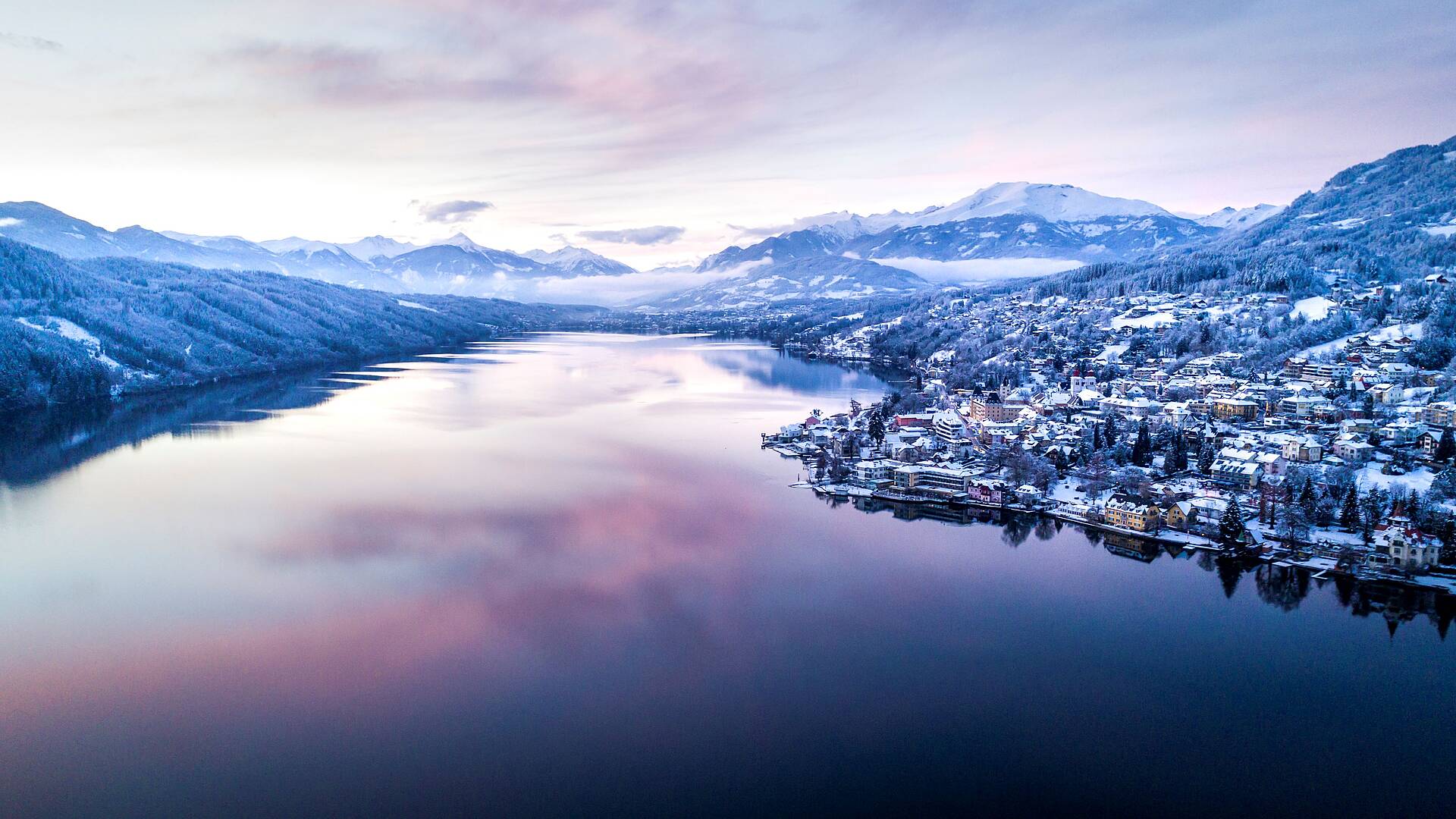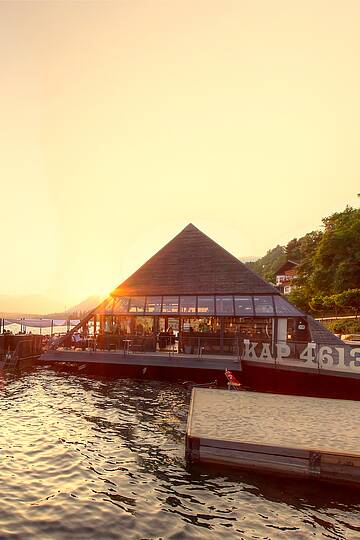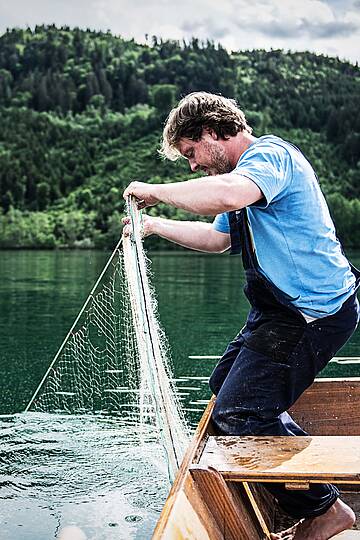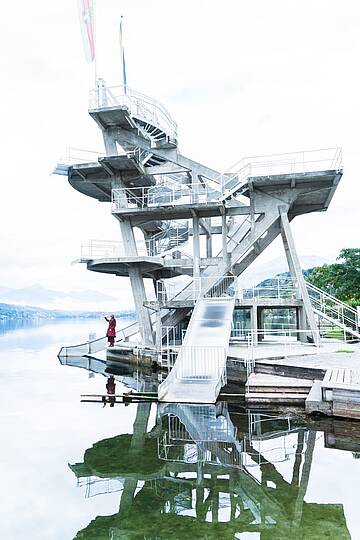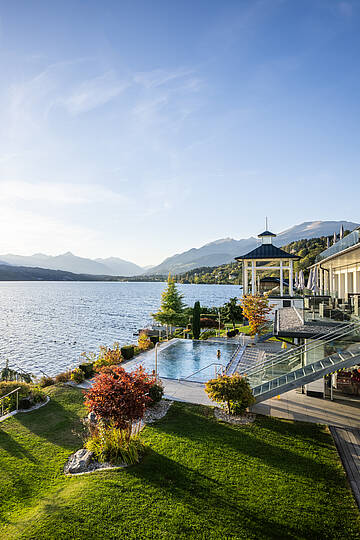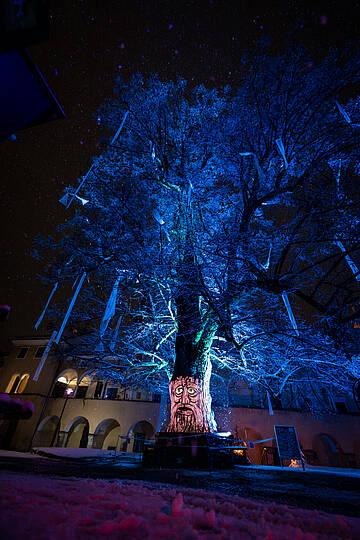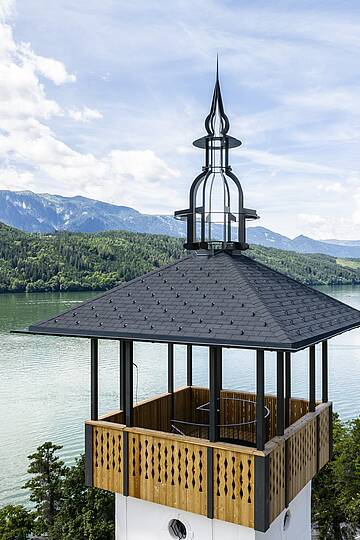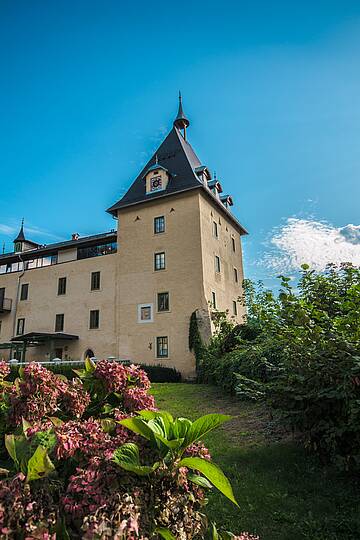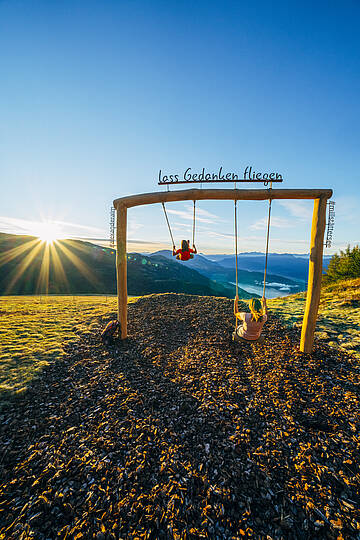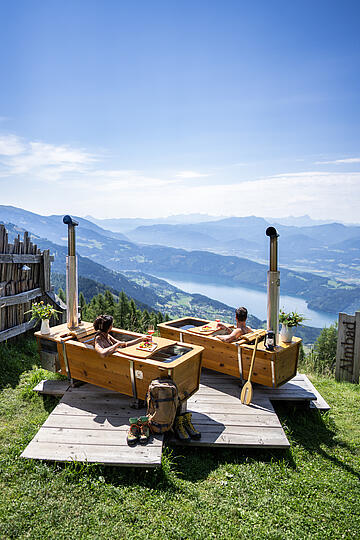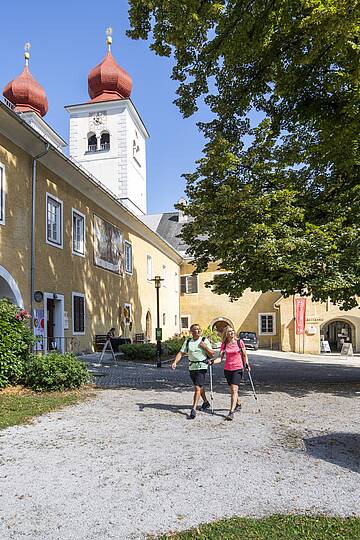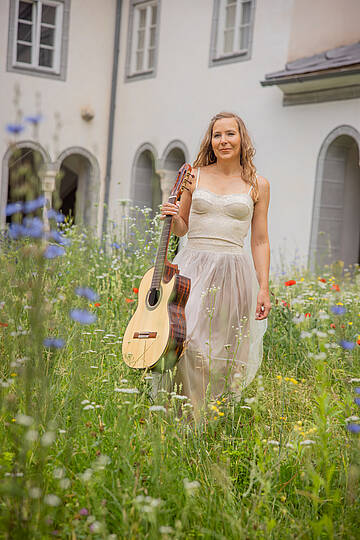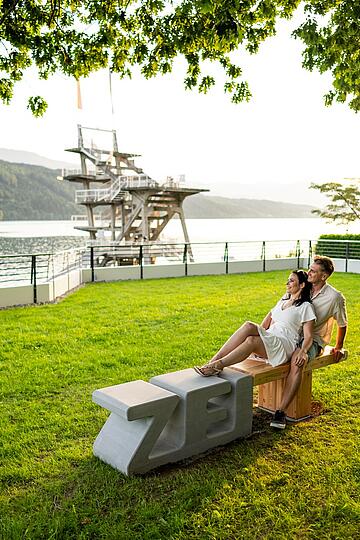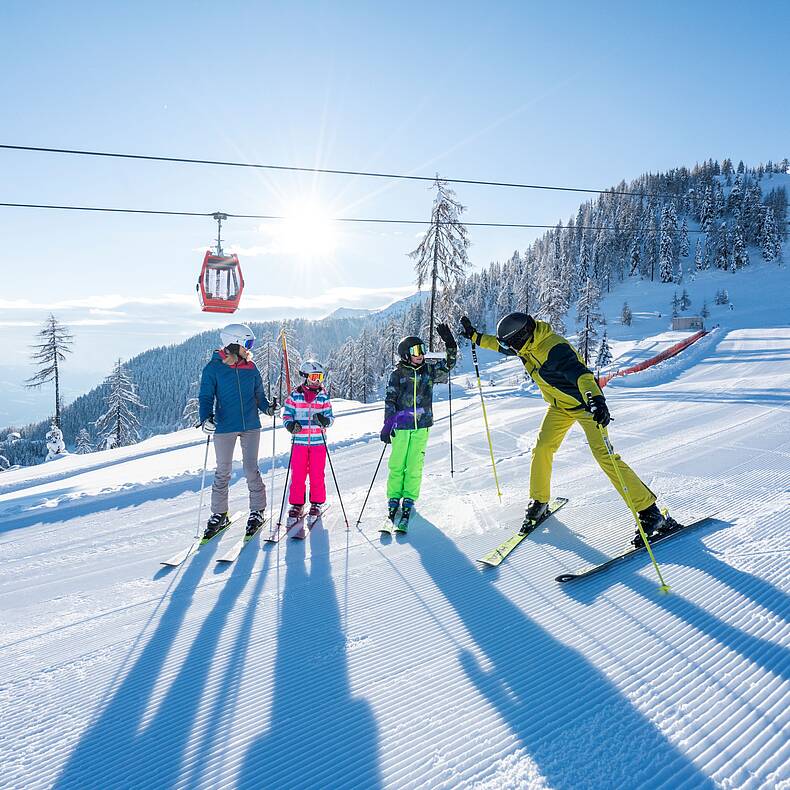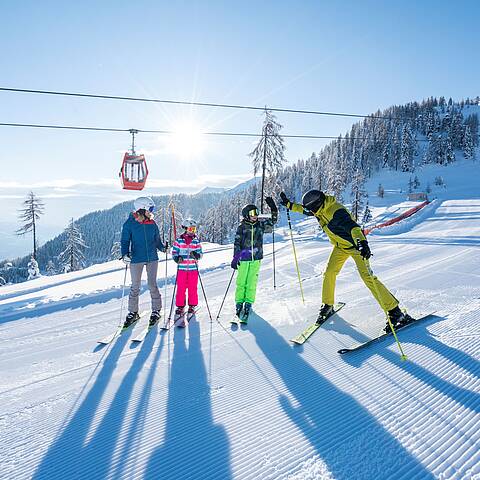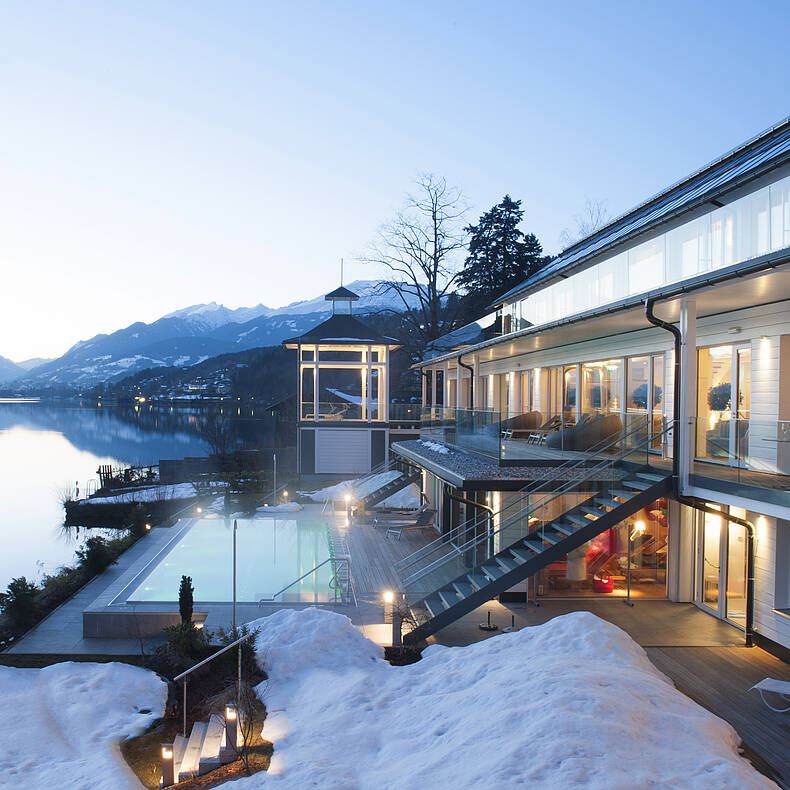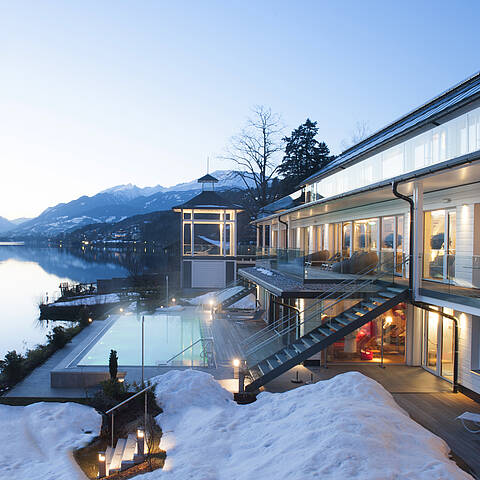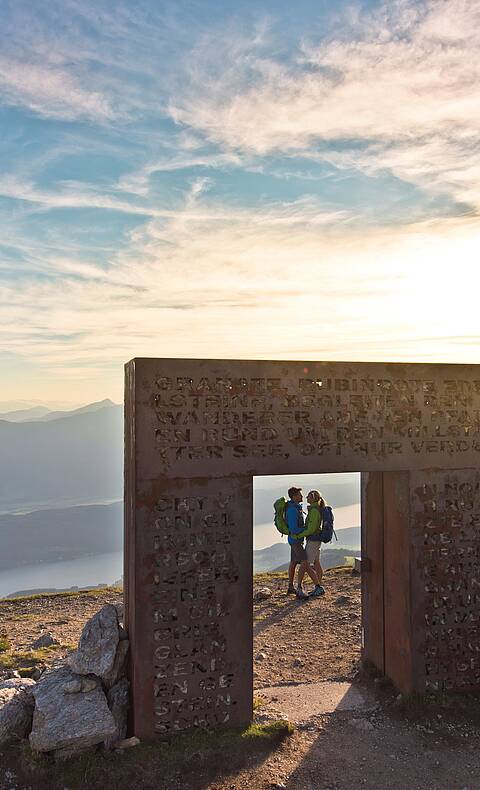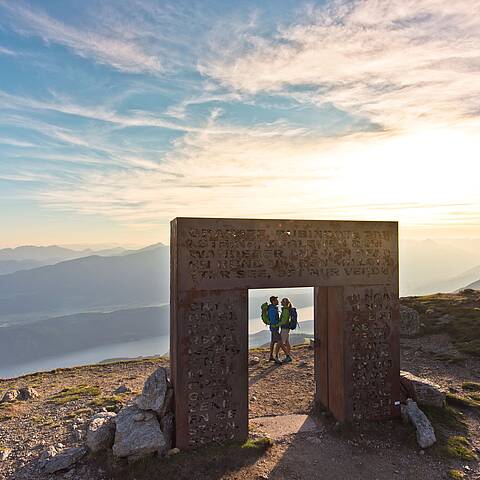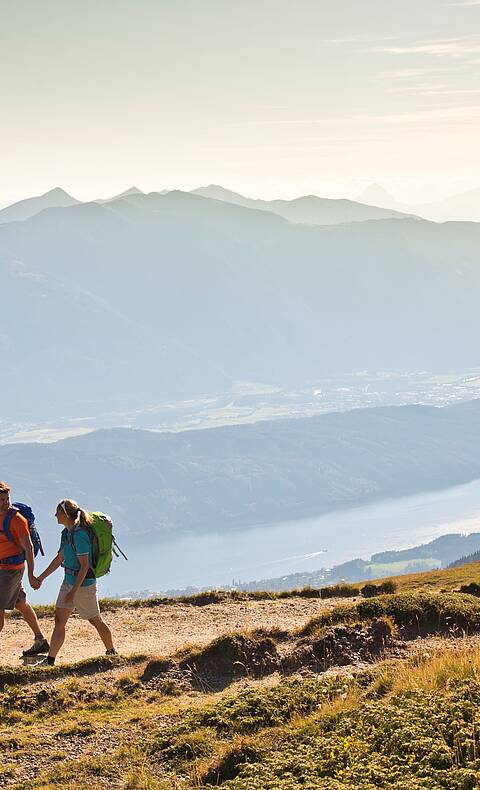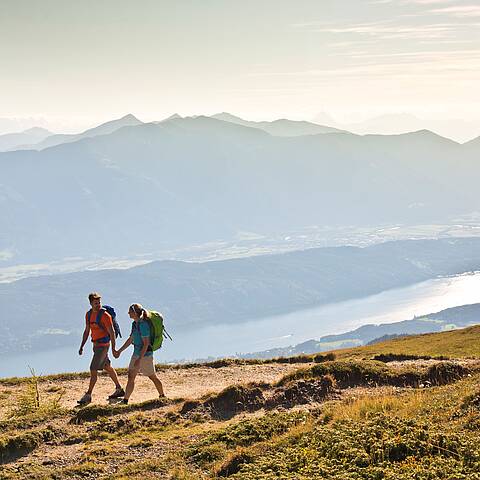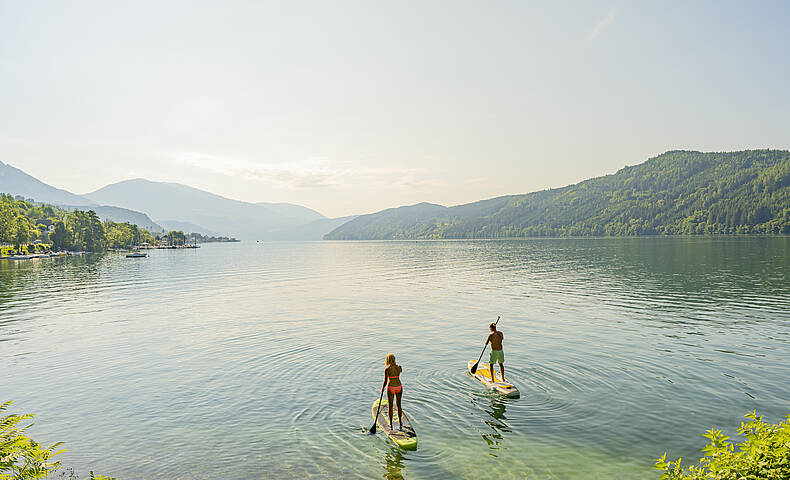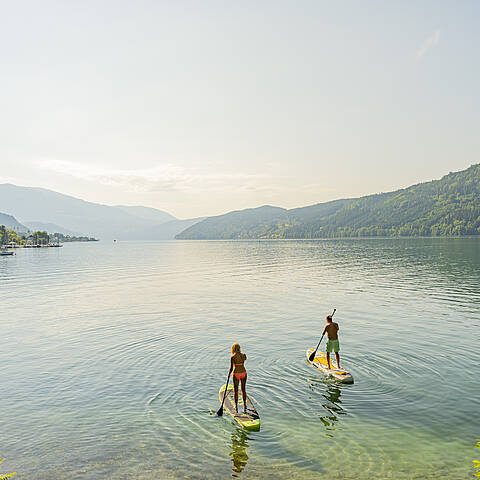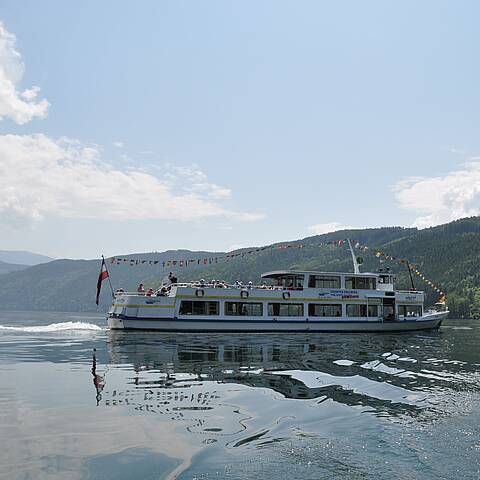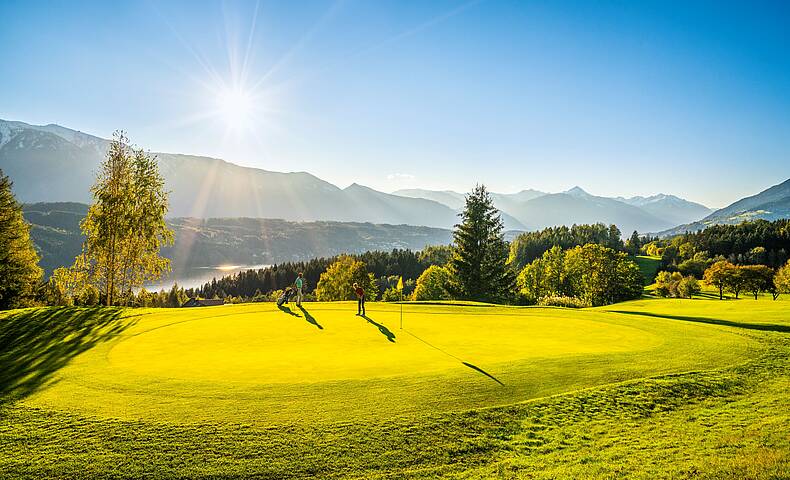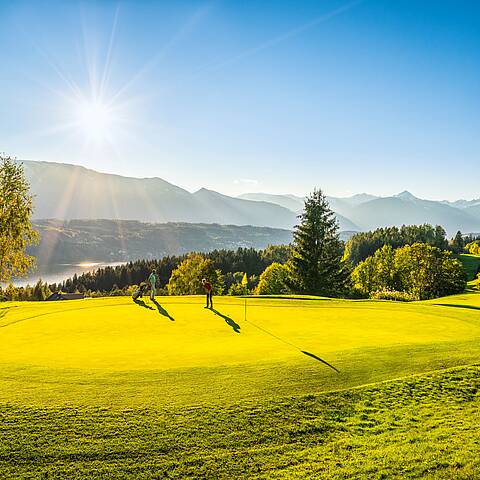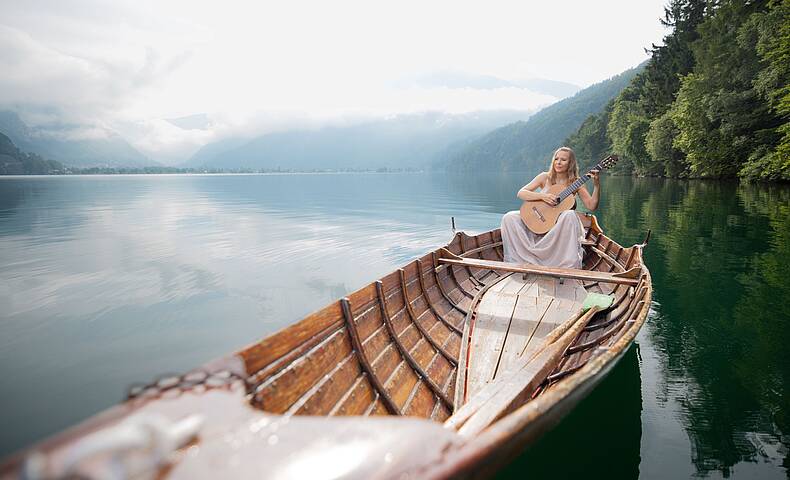Millstatt in Carinthia is a certified Hiking Village & Slow Food Village - a place where enjoyment of the lake, culture and alpine nature merge into a mindful vacation. Real, moving & decelerated - that's what TIME in Millstatt feels like.
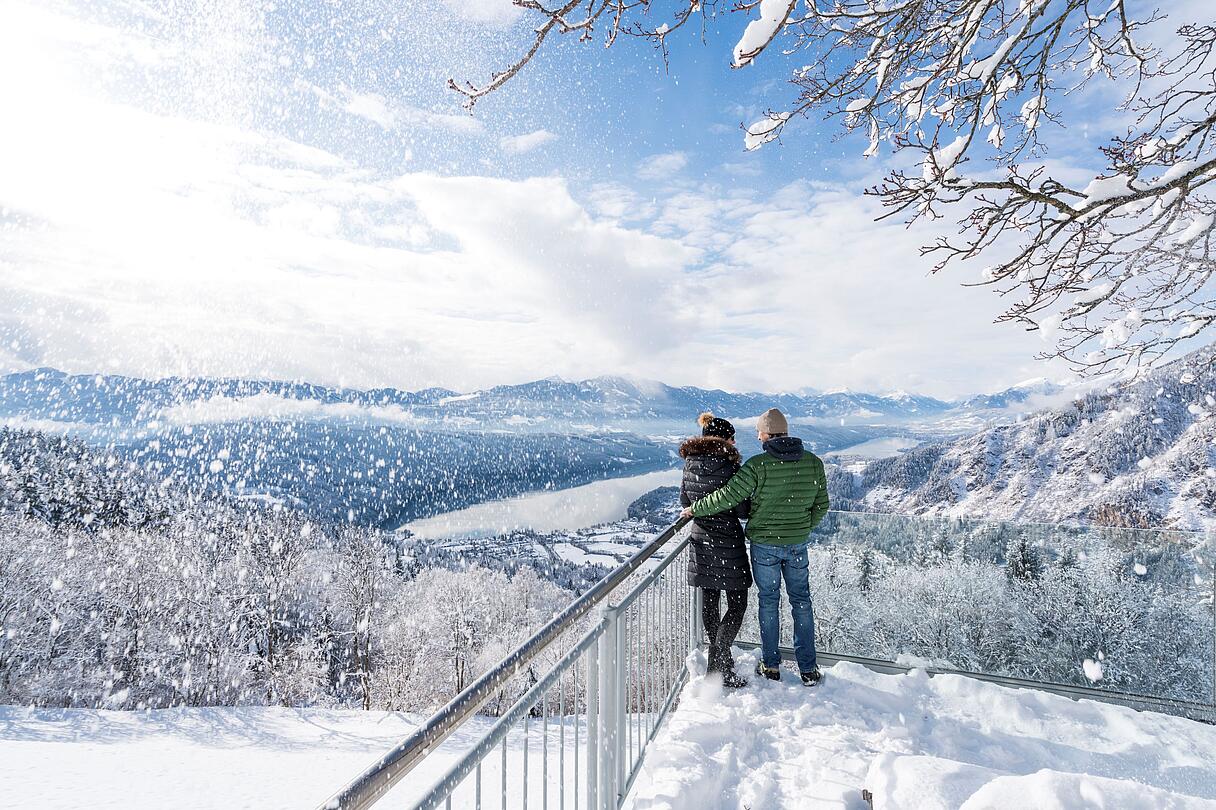
My winter holiday
in Millstatt am See
Very rarely, only every 20 years or so, does a stable layer of ice form on Lake Millstätter See. From time to time, the brave dive into the winter water. This pleasure is particularly refreshing after a sauna session with a view of the lake in the Millstatt Bathhouse. The box seat invites you to enjoy lake wellness all year round. The combination of skiing fun in one of the nearby ski resorts - the Goldeck, Bad Kleinkirchheim, but also the Turrach and Katschberg are within easy reach - followed by time out on the shores of the lake is perfect. In the pre-Christmas period, the “Lichtweg” makes Millstatt shine.
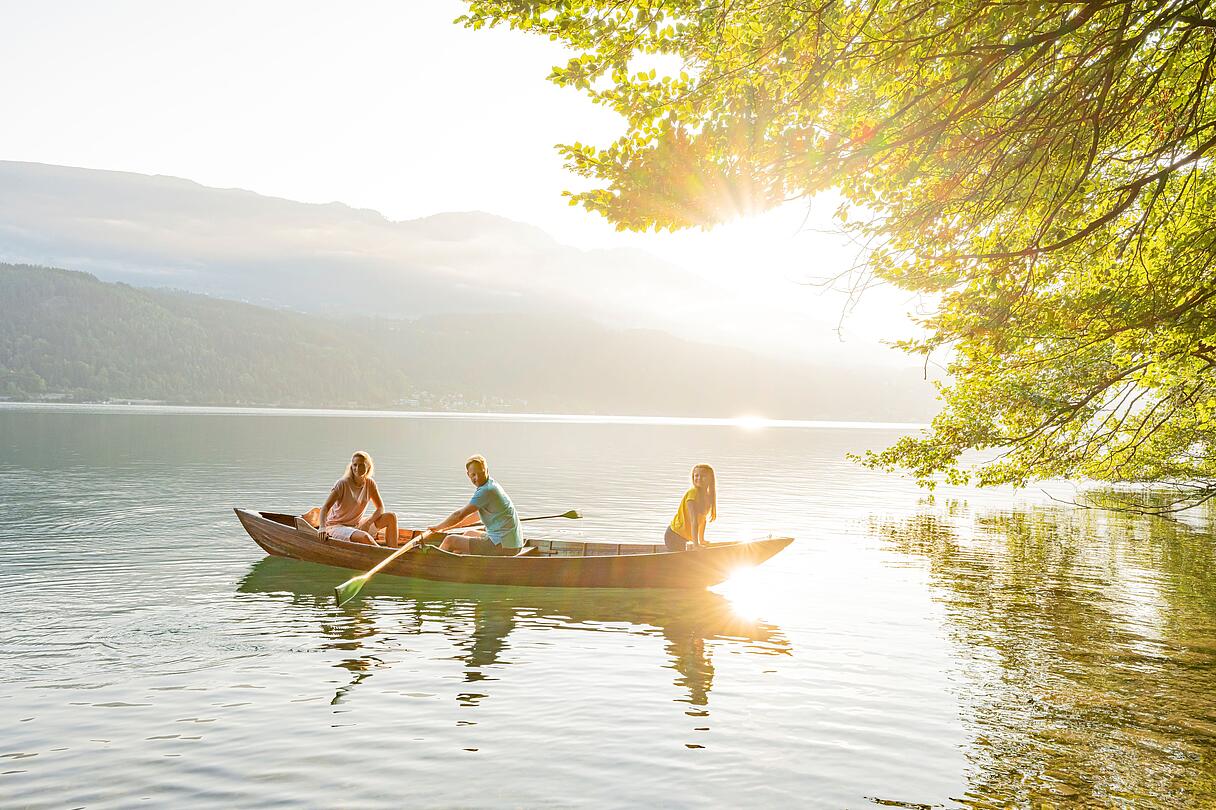
My summer holiday
in Millstatt am See
Summer in Millstatt is a holiday by the lake: with a boat trip or a tour in a rowing boat, swimming in the warm water or a ringo ride, a concert visit and a walk along the Villenweg, a cone of ice cream on the promenade and a summer drink in the beach bar. But summer in Millstatt is also a hike to the Garnet Gate and a swing on the panorama swing, a relaxing dip in the AlpBath on the Alexander Hut and a search for the ruby-red garnet gemstones on the Millstätter Alpe.
Sights - Millstatt Abbey, bathhouse & music weeks
The historic Millstatt Abbey dominates the townscape, as does the modern bathhouse, which combines wellness with access to the lake. The monastery, with its Romanesque collegiate church, the 12th century cloister, the famous world court fresco and the art-historically unique wedding chest of Paola Gonzaga, was the spiritual and cultural center of Carinthia for centuries - and is today one of the most important Romanesque buildings in southern Austria.
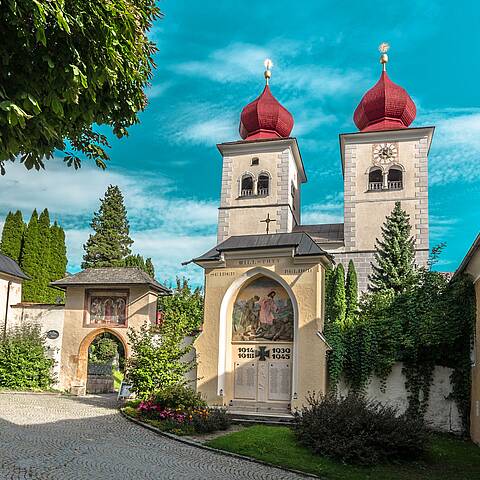
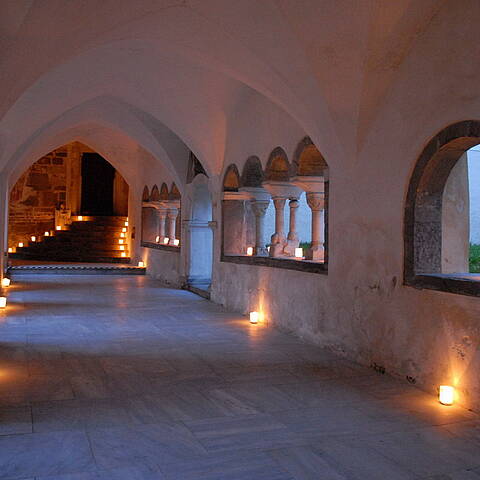
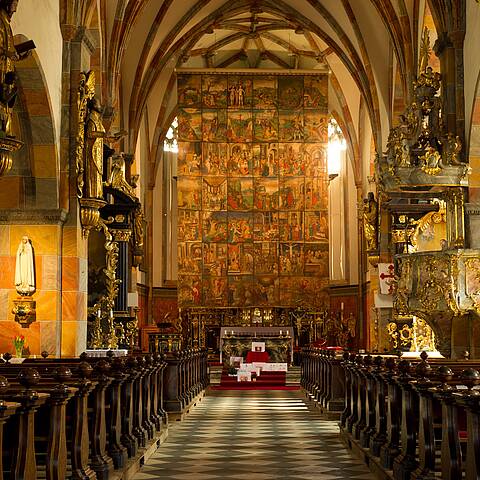
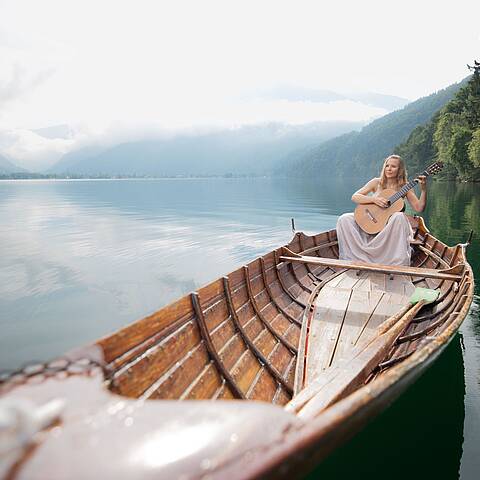
Hiking with a view - tours & experiences around the hiking village
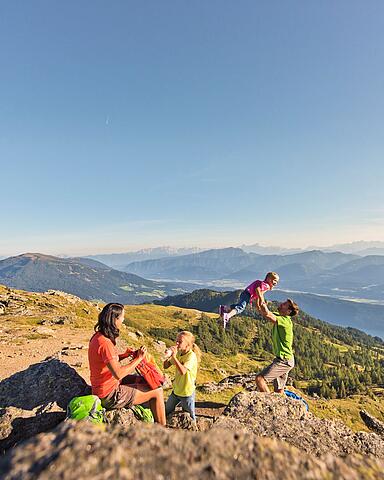
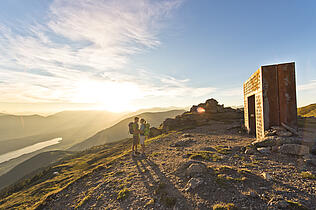
The hiking village of Millstatt invites you to enjoy panoramic tours in the Nockberge mountains - from family-friendly riverside trails to challenging summit routes. Popular routes lead to the Millstätter Alpe, along the Path of Love to the Granattor or along the Via Paradiso.
The panorama of Lake Millstätter See awaits everywhere - silent, powerful and inspiring. Rest areas and huts on the Millstätter Alpe are popular destinations - with typical Carinthian Brettljause snacks, Kaiserschmarrn pancakes and stories from the heights.

From villa to villa - Walk through the summer resort
The impressive villa architecture gives Millstatt am See its incomparable charm. Panels along the "Villenweg" and a brochure, which can be purchased from the tourist office, provide an insight into the history of the listed stately homes.
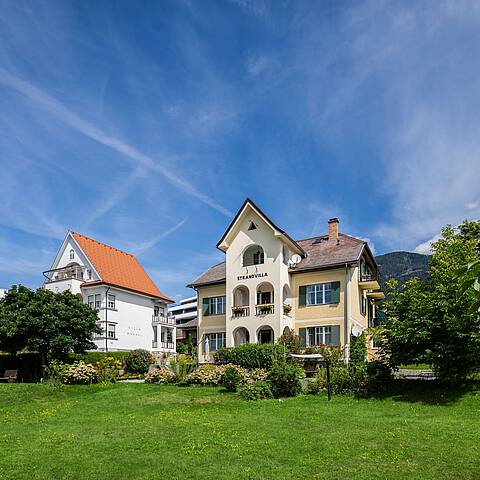
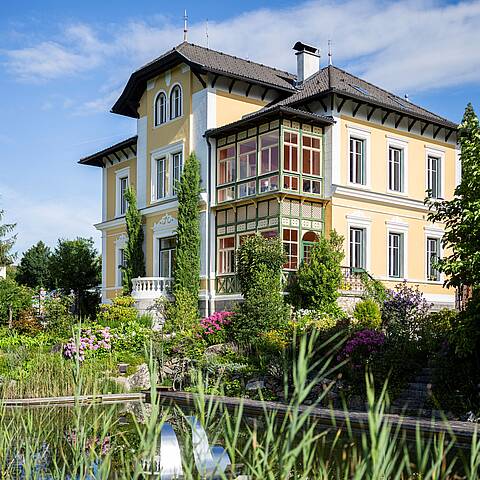
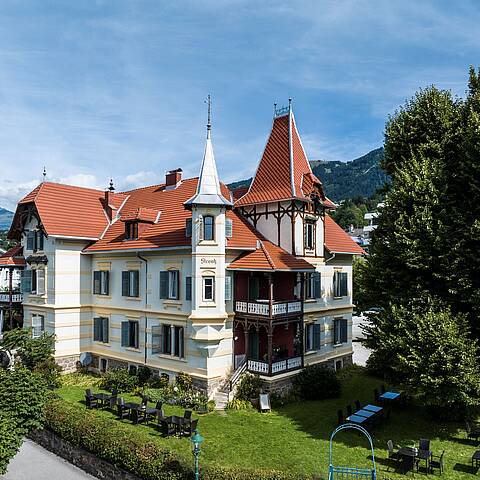
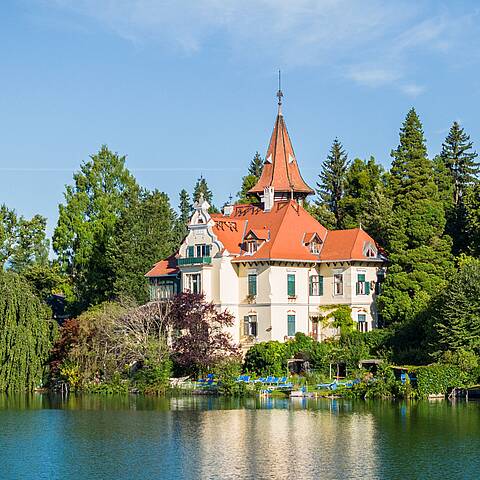
Accommodation, excursion destinations, events & more ...
Experiences near me
Weather, altitude & history - facts about Millstatt am See
The history of tourism in Millstatt begins with a small journey with a big impact: in 1869, a Viennese bought the first train ticket south - destination: Villach. From there, he traveled by horse-drawn carriage and flatboat across Lake Millstatt until he landed in Millstatt at sunset - more by chance than by design.
Just a few years later, in 1885, over 900 guests were already strolling around the lake. They came for a summer retreat, played cards, chatted - and enjoyed the peace and quiet. It was forward-thinking farmers, innkeepers and craftsmen who, together with the first guests, laid the foundations for Millstatt as a spa and recreation resort.
What convinced them back then still applies today: mild climate, warm lake temperatures, clear air, gentle mountains and freshly caught fish. This is exactly what makes Millstatt am See a place where tradition and quality of life are still in harmony today.
The market town of Millstatt am See is located at 588 m above sea level. The surrounding districts such as Obermillstatt are up to 850 m above sea level - with panoramic views of Lake Millstatt.
The place name "Millstatt" is derived from the pre-Slavic "Melissa", which means "mountain stream" or "hill stream". The name probably refers to the Riegenbach stream, which flows into the lake in Millstatt. Legend has it that the Slavic Duke Domitian threw a thousand pagan statues ("mille statuae") into the lake after his conversion to Christianity, from which the name is said to have originated.
The listed diving tower at Millstatt lido was built in 1930 and extensively renovated in 2019. It offers diving platforms at heights of 3, 5 and 10 m as well as two slides - a landmark for summer retreats with tradition.
Millstatt am See is a recognized climatic health resort at 588 m above sea level. Its location on the south side of the Alps ensures above-average hours of sunshine - ideal for hiking, swimming and cultural enjoyment. Current weather data and live images are provided by the local webcam.

